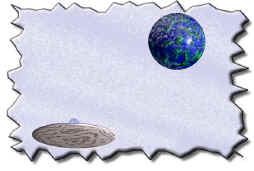Language Development in Fiction#3 Setting and Connotations |
|
The Setting includes the atmosphere, location, and details of the story environment. In a way, it is similar to both Character and Connotation because, in the literary and visual arts, setting interrelates with both the other characters and with the reader. No human being sees everything. We all pick and choose what objects or actions to see in any given situation. I, for example, notice clutter in my house, much more so than my spouse or children do. I notice dirty socks on the floor immediately when I walk in the room. To everyone else, the socks are invisible. What this seems to suggest is that people tend to notice those things that are interest them, that are valuable or important to them. In literary and visual arts, this can be used, in an opposite sense, to create interest or value. If a reader or viewer repeatedly sees certain things, the objects the writer targets as important or valuable, then they will realize the value, the importance. The choice of setting, the location, structures, cultures, and objects become the Significant Details toward the communication of mood and value. The James Bond movies, for example, use prestigious international settings to convey the worldliness, the extravagance of James Bond. This movie uses a Realistic setting to create mood. The "Batman" movies, on the other hand, use exaggerated and dark sets, with monstrous buildings and statues. This Abstract setting amplifies the unreality and exaggeration. Realism, then, is the attempt by the writer to create a believable setting. Usually this is done to create a mood where the actions of the character appear more significant to the reader. This is called Verisimilitude. Abstract fictions do not attempt to imitate the real world. In comedies, action-adventures, science fiction, westerns, and so on, the setting is primarily a mood-creator, and functions very similarly to another character. Setting can even create effects for the viewers. For example, The X-Files makes use of dark colors and night shots in many of its episodes. Since it is difficult to view these episodes in a lighted room, viewers often turn out the lights to watch the show, thus creating the mood the producers want. |
 |
Copyright 2005 by dave rogers, All Rights Reserved |
